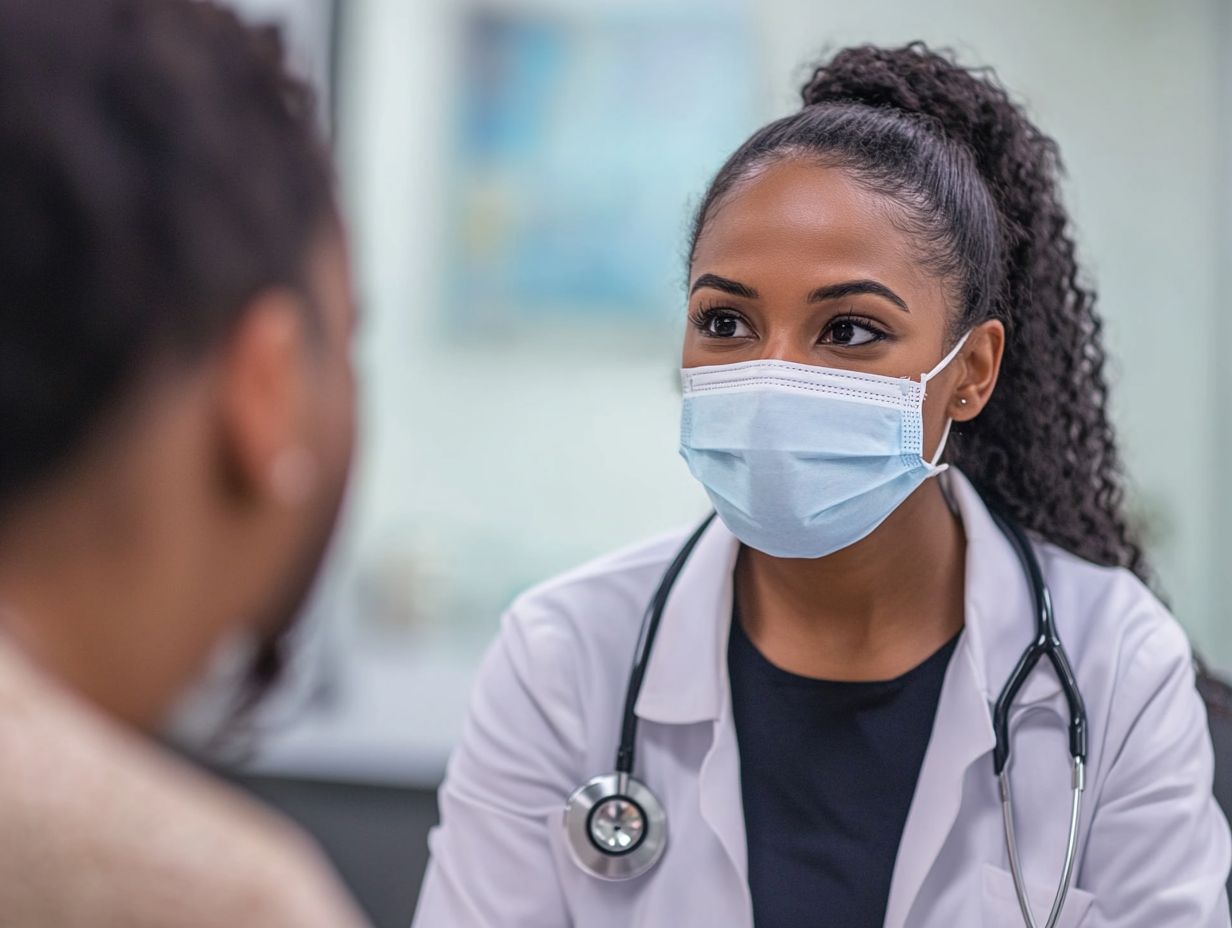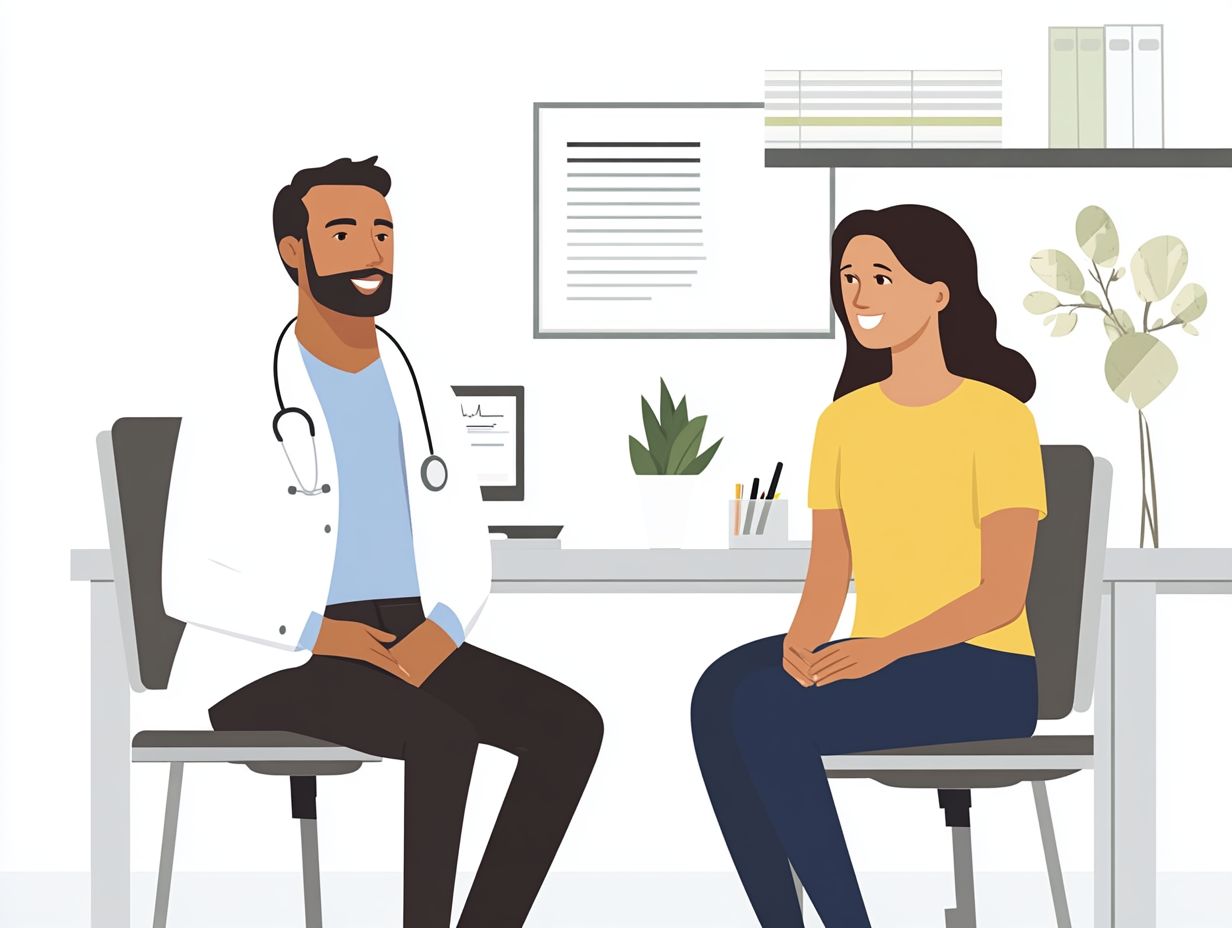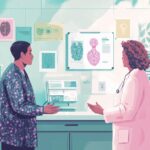Effective healthcare communication techniques are vital for enhancing patient care, healthcare outcomes, and overall patient satisfaction. They facilitate trust-building between patients and healthcare providers, ensuring accurate patient information exchange and fostering a collaborative environment in healthcare settings.
- Key communication techniques include active listening, empathetic communication, and the use of nonverbal cues, all of which contribute to improved adherence to treatment plans and stronger patient-provider relationships, enhancing trust in providers.
Challenges such as language barriers, cultural misunderstandings, and lack of cultural competency can hinder communication, but addressing these obstacles through tailored patient education and diverse workforce initiatives can significantly improve interactions in healthcare settings.
Incorporating communication tools and technology, such as telemedicine and patient portals, further enhances healthcare communication by providing real-time access to patient information and facilitating seamless interactions. These communication strategies collectively improve healthcare delivery, streamline standardized processes, and ensure effective patient engagement.
Key Takeaways:
The Importance of Effective Communication in Healthcare

Effective communication in healthcare influences patient care and overall patient experience by establishing trust and rapport building. It allows healthcare providers to build trust, enabling patients to share their medical history and treatment preferences. Effective interpersonal communication also improves collaboration among healthcare teams, ensuring accurate information sharing and reducing medical errors.
Impact on Patient Care and Outcomes
Effective communication in healthcare improves patient care and healthcare outcomes by establishing trust and ensuring understanding. When healthcare providers communicate clearly using plain language, patients are more likely to follow treatment plans, reducing anxiety and increasing adherence. Listening to patients and encouraging open-ended questions fosters a collaborative environment, enabling patients to manage their health. Providing tailored patient education reduces misunderstandings, strengthens the patient-provider relationship, and enhances patient satisfaction.
Barriers to Effective Communication in Healthcare
Communication barriers to effective healthcare communication include language barriers, emotional and psychological factors, and cultural misunderstandings. These barriers hinder patient care by causing miscommunication between healthcare providers and patients, affecting healthcare outcomes and patient trust.
Identifying and Addressing Common Obstacles
Common obstacles in healthcare communication include miscommunication, cultural differences, and emotional barriers.
Addressing these communication barriers involves using active listening, employing a diverse workforce, and providing culturally relevant patient education. Additionally, language training and provider training on interpersonal skills are essential in overcoming these challenges.
Healthcare providers can also foster better communication by emphasizing empathy and offering information in multiple languages.
Effective Communication Techniques for Healthcare Professionals

Effective communication techniques for healthcare professionals include active listening and empathetic communication.
Active listening requires healthcare professionals to fully engage with patients, allowing uninterrupted expression of thoughts and concerns.
Empathetic communication involves understanding and validating patient feelings, which strengthens patient-provider trust and improves care quality.
Active Listening and Empathetic Communication
Active listening and empathetic communication are effective communication techniques in healthcare that improve the patient-provider relationship by fostering trust and understanding. Active listening involves fully engaging with a patient’s concerns, while empathetic communication acknowledges and validates their feelings. These communication skills enhance patient satisfaction and adherence to treatment plans.
Nonverbal Communication Skills
Nonverbal communication skills involve using body language, facial expressions, and gestures to convey emotions and messages without words.
In healthcare, nonverbal communication affects patient perceptions of care and demonstrates confidence, attentiveness, and empathy.
Skills like maintaining eye contact and using open body language enhance patient interactions.
Healthcare professionals can improve these skills through training and mindfulness.
Effective Communication Strategies for Patients and Families
Effective communication strategies for patients and families include:
- Encourage open dialogue between healthcare providers and patients to understand patient preferences.
- Provide clear and accessible patient education to enable active participation in healthcare decisions.
- Use visual aids and written materials to enhance understanding of medical information.
- Establish regular follow-up communications to address ongoing concerns and questions.
Encouraging Open Communication and Understanding Needs

Open communication between healthcare providers and patients is essential for understanding individual needs and enhancing patient experiences.
Open communication allows patients to express concerns, enabling providers to tailor care plans and improve satisfaction and outcomes.
Building trust through open dialogue ensures patients share vital health information, leading to accurate diagnoses and effective treatment.
Using Technology and Communication Tools for Effective Communication in Healthcare
Using technology and communication tools for effective communication in healthcare involves tools like telemedicine, patient portals, and mobile applications to improve interactions between healthcare professionals and patients. Technology in healthcare communication enables real-time access to healthcare data and medical information. These advancements streamline communication within healthcare organizations and improve healthcare outcomes.
Benefits and Best Practices
Benefits of technology in healthcare communication include enhanced patient satisfaction, streamlined communication protocols, and improved healthcare delivery.
Best practices involve using electronic health records and secure messaging for accurate information sharing.
Telehealth services offer real-time consultations, reducing wait times and providing timely patient advice.
Training healthcare staff on technology use decreases miscommunication, medical errors, and ensures adherence to communication protocols.
Frequently Asked Questions
What are some effective communication techniques in healthcare?

Effective communication techniques in healthcare include active listening, using clear and simple language, non-verbal cues, and open-ended questions.
How can active listening improve communication in healthcare?
Active listening involves fully focusing on the speaker, understanding their perspective, and providing appropriate responses using effective listening skills. This can improve communication by ensuring that all patient information is accurately conveyed and understood, fostering trust in providers.
What is the importance of using clear and simple language in healthcare communication?
Using clear and simple language in healthcare communication is important because it ensures that patients and healthcare professionals understand each other. Medical jargon can be confusing, so using plain language can prevent misunderstandings and enhance patient trust.
How do non-verbal cues play a role in effective healthcare communication?
Non-verbal cues, such as body language and facial expressions, can convey important messages in healthcare communication. They can show empathy, concern, and understanding, which can help build trust and rapport with patients, enhancing the patient-provider relationship.
Why is it important to ask open-ended questions in healthcare communication?
Open-ended questions allow patients to share their thoughts and feelings, providing healthcare professionals with a deeper understanding of their needs and concerns. This can lead to more effective treatment, enhanced care plans, and a better patient experience.
How can healthcare professionals overcome communication barriers?
To overcome communication barriers, healthcare professionals should be aware of their own biases, actively listen to patients, use appropriate language and tone, and be open to feedback and clarification. They can also use interpreters or technology to aid in communication with non-native speakers or patients with hearing impairments, ensuring patient confidentiality and professional demeanor.





